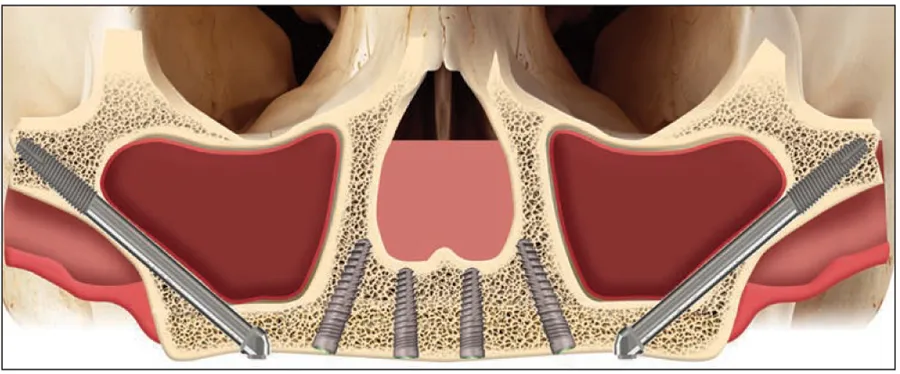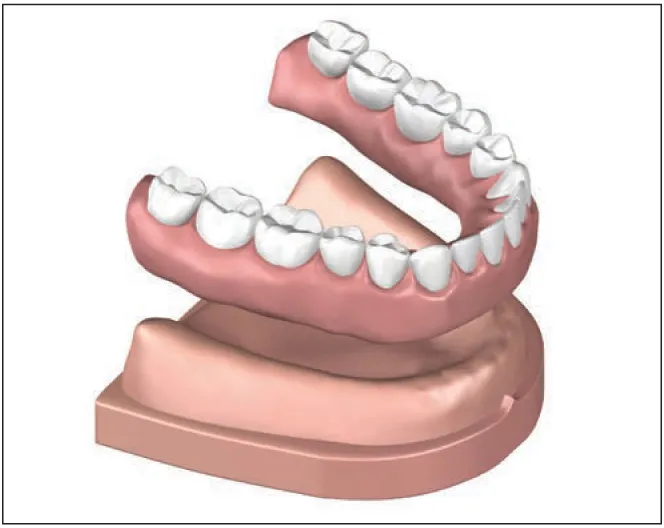
- 120 pages
- English
- ePUB (mobile friendly)
- Available on iOS & Android
Full-Arch Implant Rehabilitation
About this book
The full-arch implant rehabilitation (FAIR) protocol is one of the newest implant therapy innovations to treat the edentulous or nearly edentulous patient. The FAIR prosthesis is immediate, fixed, esthetically pleasing, highly functional, inexpensive, and maintainable, and it can frequently be installed without bone grafting. This book describes how the FAIR protocol works, who it should be used for, and methods to implement it successfully for different patients. The system can be used in both arches and in patients with total or near-total edentulism. Several chapters are devoted to describing step-by-step treatment with detailed clinical photographs documenting every step from initial assessment to prosthesis delivery. Even those new to fixed denture systems will find the procedures easy to follow and can begin implementing the FAIR approach for their patients.
Frequently asked questions
- Essential is ideal for learners and professionals who enjoy exploring a wide range of subjects. Access the Essential Library with 800,000+ trusted titles and best-sellers across business, personal growth, and the humanities. Includes unlimited reading time and Standard Read Aloud voice.
- Complete: Perfect for advanced learners and researchers needing full, unrestricted access. Unlock 1.4M+ books across hundreds of subjects, including academic and specialized titles. The Complete Plan also includes advanced features like Premium Read Aloud and Research Assistant.
Please note we cannot support devices running on iOS 13 and Android 7 or earlier. Learn more about using the app.
Information

| ADVANTAGES | DISADVANTAGES | |
| Removable dentures | ▪ Relatively inexpensive tooth and gingival replacement ▪ Provides lip support ▪ Easy to remove and clean outside of the mouth | ▪ Uncomfortable ▪ May cause sore spots on gingival tissue ▪ Makes it difficult to eat certain foods ▪ Causes accelerated bone loss ▪ Often requires relining to improve comfort as bone deteriorates ▪ May make speech difficult ▪ May require creams or adhesives to reduce mobility ▪ Approximately 10% functionality compared with natural teeth |
| Removable overdenture supported by 2 or 4 implants | ▪ Improves stability and functionality to 60% compared with natural teeth ▪ Relatively inexpensive tooth and gingival replacement ▪ Provides lip support ▪ Easy to clean outside of the mouth | ▪Uncomfortable ▪ May cause sore spots on gingival tissue ▪ Denture must be removed and cleaned outside of the mouth ▪ May still move when chewing or speaking ▪ May require relining to improve fit and comfort as bone deteriorates |
| FAIR approach | ▪ Improves functionality to 70% compared with natural teeth ▪ Eliminates the need for bone grafting ▪ A provisional partial denture can be provided on the day of surgery, allowing a soft food diet during healing ▪ Replaces roots and teeth ▪ Preserves bone and soft tissue ▪ No decay; 95% success rate over 30 years ▪ Natural-looking esthetics ▪ Allows patients to eat any kinds of foods ▪ Can be cleaned like natural teeth | ▪ Requires healing and restorative time ▪ Involves surgical procedure and anesthesia |



Table of contents
- Cover
- About the book
- Half Title
- Title Page
- Copyright Page
- Contents
- Preface
- 1 Evolution of the FAIR Protocol
- 2 History of Tilted Implants with an Immediate Prosthesis
- 3 Identifying and Evaluating Candidates
- 4 The FAIR Technique and Its Modifications
- 5 Treating the Fully Edentulous Maxilla
- 6 Treating the Fully Edentulous Mandible
- 7 Treating the Partially Edentulous Maxilla
- 8 Treating the Partially Edentulous Mandible
- 9 FAIR Prosthetics
- 10 Possible Complications
- About the Author
- Backcover